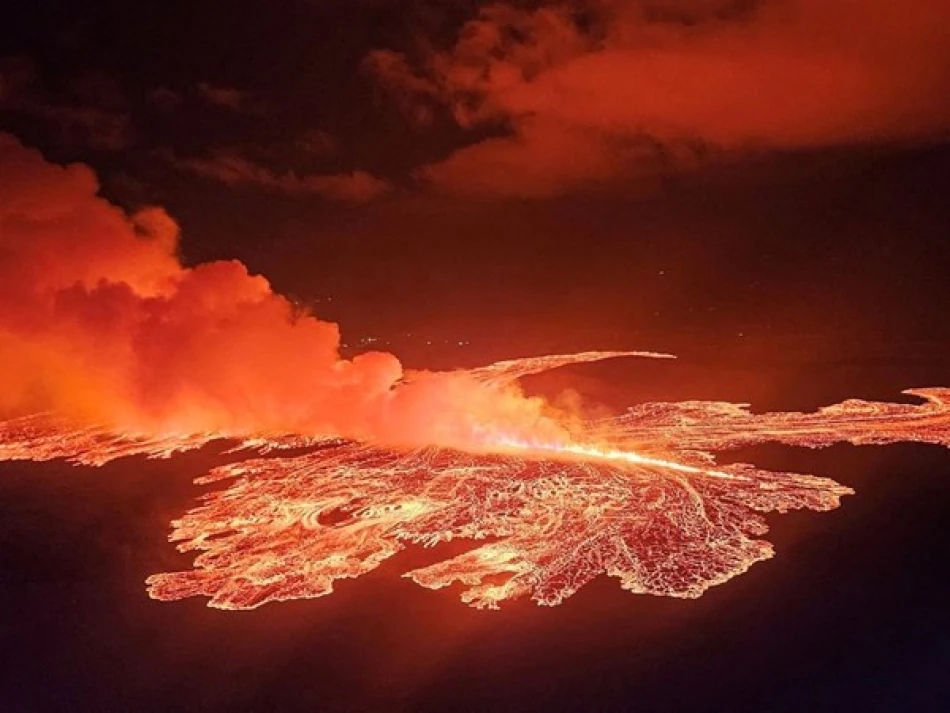
Icelandic Volcano Erupts, Captivating Viewers Worldwide
Iceland's Volcanic Awakening: A New Eruption Signals Ongoing Geological Transformation
Iceland's volatile Reykjanes Peninsula has erupted once again, marking the 12th volcanic event since 2021 in what scientists increasingly view as a fundamental shift in the island nation's geological activity. The latest eruption, which began Wednesday in the country's southwest, continues a pattern of fissure-driven lava flows that have transformed the landscape near the capital and forced the permanent evacuation of an entire fishing community.
A Geological Awakening After Centuries of Dormancy
The Reykjanes Peninsula's recent volcanic renaissance represents a dramatic departure from its 800-year slumber. Unlike the explosive, ash-producing eruptions that paralyzed European air travel in 2010 with the Eyjafjallajökull volcano, these new eruptions are characterized by spectacular lava fountains emerging from long fissures in the Earth's crust rather than traditional volcanic cones.
This distinction is crucial for understanding the broader implications. The current eruptions produce minimal ash dispersal into the stratosphere, avoiding the aviation chaos that cost the global economy an estimated $5 billion over six days in 2010. However, the persistent nature of these fissure eruptions presents a different challenge entirely.
The Human Cost: Grindavik's Permanent Displacement
The fishing town of Grindavik, once home to nearly 4,000 residents, stands as a stark symbol of Iceland's new volcanic reality. Evacuated in 2023 following intensifying seismic activity and lava flow threats, the community remains largely abandoned. This marks one of the most significant permanent displacements due to volcanic activity in modern Icelandic history.
The town's abandonment reflects the unpredictable and persistent nature of the current volcanic cycle. Unlike single-event eruptions that communities can rebuild after, the ongoing geological instability makes long-term habitation untenable, forcing residents to permanently relocate and rebuild their lives elsewhere.
Economic and Infrastructure Implications
While Reykjavik remains safe from direct volcanic threats, the repeated eruptions carry broader economic consequences. Iceland's tourism industry, which contributes roughly 8% to the country's GDP, faces a complex dynamic where volcanic spectacle attracts visitors even as infrastructure risks mount.
The country's geothermal energy sector, which provides nearly 90% of Iceland's heating and hot water, could paradoxically benefit from increased volcanic activity. Enhanced geothermal gradients may improve energy extraction efficiency, potentially strengthening Iceland's position as a renewable energy leader and attractive destination for energy-intensive industries like data centers and aluminum smelting.
Global Context: Living with Volcanic Uncertainty
Iceland's experience offers valuable lessons for other volcanically active regions worldwide. Unlike the Philippines or Indonesia, where explosive eruptions pose immediate threats to dense populations, Iceland's relatively sparse population and advanced monitoring systems provide a controlled environment for studying long-term volcanic cycles.
The country's response strategy—combining scientific monitoring, gradual evacuation, and infrastructure adaptation—may serve as a model for other nations facing similar geological challenges. Japan, New Zealand, and parts of the western United States could particularly benefit from Iceland's approach to managing persistent volcanic threats.
Looking Forward: A New Geological Era
Scientists suggest the Reykjanes Peninsula may be entering a prolonged period of intermittent volcanic activity, potentially lasting decades or even centuries. This geological shift requires fundamental changes in land-use planning, emergency preparedness, and economic development strategies.
The current eruption cycle represents more than isolated geological events—it signals Iceland's adaptation to a new normal where volcanic activity becomes a permanent feature of national planning rather than an exceptional crisis to be managed.
Most Viewed News

 Layla Al Mansoori
Layla Al Mansoori






